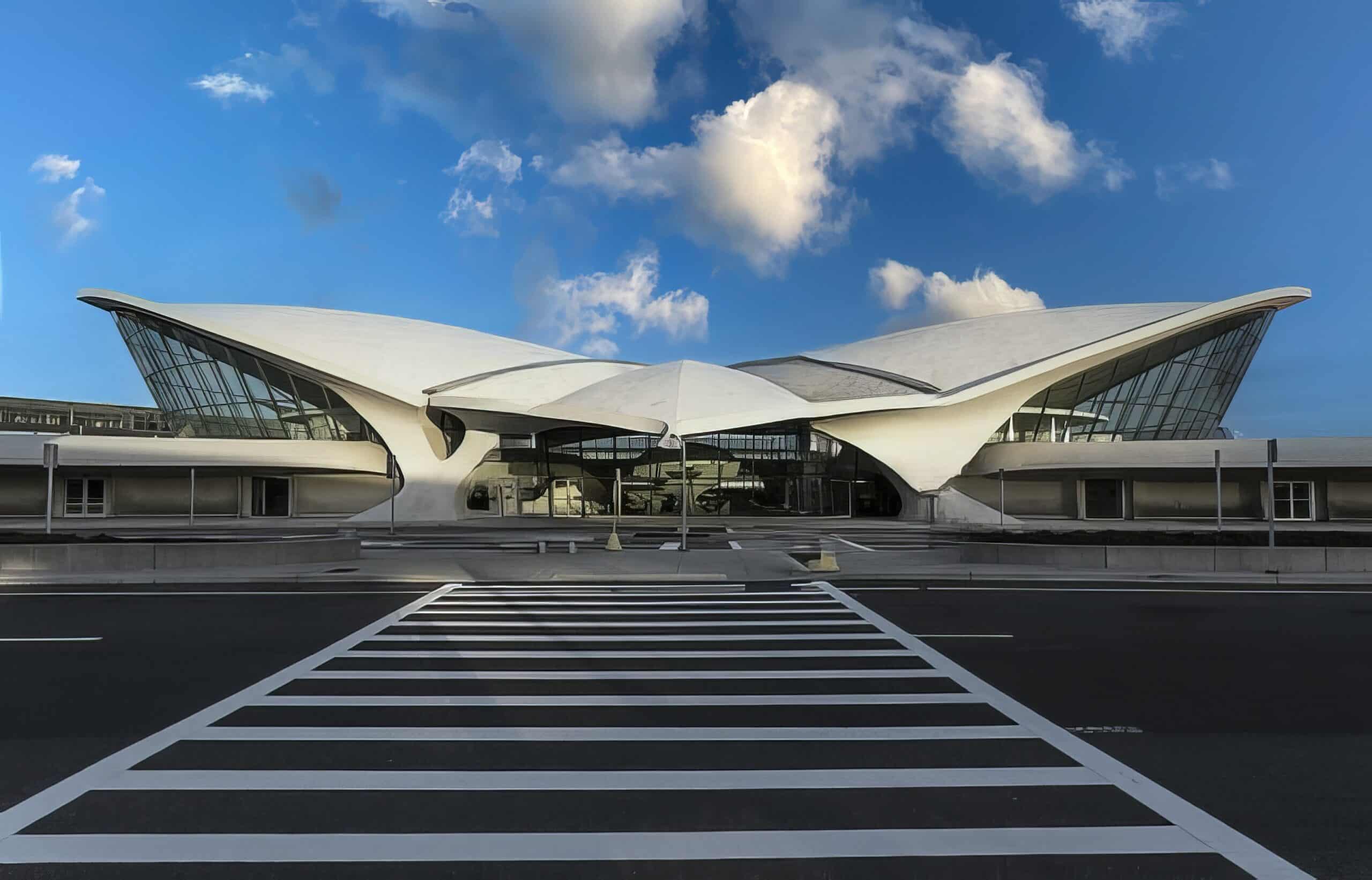by Adam Scull

The impact of Eero Saarinen, a significant presence in US architecture and design, can be seen in the contemporary architectural landscape. In 1910, Saarinen was born in Finland and later relocated to the US with his family in 1923. The career of Saarinen is distinguished by his innovative use of materials, technology, and his ability to integrate architecture into its surrounding landscape, making him a pivotal figure in the development of 20th-century architecture.
Eero Saarinen’s early exposure to design and creativity shaped his lifelong connection with architecture. During his time at the Cranbrook Academy of Art, which was both his father’s workplace and a breeding ground for American modernism, he was exposed to a range of artistic disciplines. Saarinen continued his education by studying sculpture at the Académie de la Grande Chaumière in Paris and architecture at the Yale School of Architecture, graduating in 1934. His exposure to various art and design fields at a young age influenced his multidisciplinary approach to architecture and furniture.
The essence of Saarinen’s architectural philosophy was to capture the spirit of the time in buildings. His argument was against applying historical styles to contemporary structures, emphasizing the importance of innovation and experimenting with novel designs and materials. Saarinen’s style is characterized by its diversity, fluid forms, and dynamic interplay between structure and environment. By fearlessly experimenting with new materials and techniques, he expanded the boundaries of architectural design.
Saarinen’s portfolio features a range of iconic buildings that have come to symbolize American modernism. Among these, the TWA Flight Center at JFK Airport, the Gateway Arch in St. Louis, and the General Motors Technical Center in Michigan stand out. Saarinen’s works demonstrate his talent for seamlessly combining functionality and stunning aesthetics, resulting in spaces that are groundbreaking and welcoming.
Saarinen’s TWA Flight Center (1962) showcased his sculptural architecture skills through its bird-like shape and innovative use of concrete, symbolizing the optimism and dynamism of the Jet Age.
Symbolizing the westward expansion of the United States, the Gateway Arch in St. Louis, Missouri, stands as a testament to Saarinen’s visionary design and engineering abilities since its construction in 1965.
The General Motors Technical Center (1956) incorporated modern design principles in an industrial setting, showcasing innovation. Its sleek shape, transparent walls, and seamless incorporation into the natural surroundings were remarkable.
Eero Saarinen’s influence surpassed his architectural projects. Through his collaborations with Charles and Ray Eames and his visionary furniture designs, such as the Tulip Chair and the Womb Chair, he has established a lasting impact on the field of design. Saarinen’s designs defied convention and expanded the scope of architectural creativity, leaving a lasting impact on architects and designers.
Saarinen’s career was defined by an unceasing quest for new ideas and forms, showcasing his belief that the most enduring designs are the most groundbreaking. Not only are his works aesthetically pleasing, but they also embody the core principles of modernism – functionality, expressionism, and a harmonious integration with the environment.
Eero Saarinen’s career demonstrated how architecture can be transformative. Saarinen’s pivotal role in modern architecture was defined by his innovative designs and visionary projects. His design philosophy embraced the fusion of art, technology, and purpose, leaving a lasting legacy. Saarinen’s work serves as an ongoing inspiration and challenge for architects and designers, encouraging them to imagine a world where form and function are perfectly balanced.
